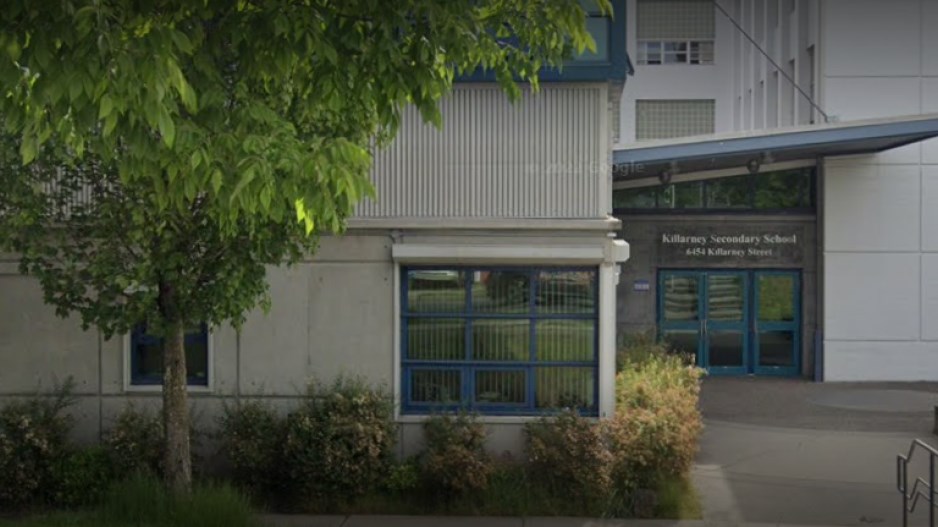A vital aspect of managing Metro Vancouver’s population growth and social cohesion is B.C.’s public school system, and according to one Simon Fraser University (SFU) expert, that system might not get enough attention.
How the region funds and plans its schools’ infrastructure and programs will have a huge impact on Metro Vancouver’s growth and development, said Andy Yan, director of SFU’s City Program and one of B.C.’s leading urban planning voices.
“Avoiding the disconnect within society begins with vibrant neighbourhood schools,” Yan said. “That’s one of the original ideas of planning most of Vancouver – that the plan was centred and built around neighbourhood schools and parks.… I think the issue here now is how to maintain that type of commitment to public school students, allowing them the environment to discover their own form of excellence.”
The challenge with assessing how to address and plan for the educational needs of neighbourhoods, officials say, is the fact that each community has its own micro-climate of factors that drive enrolment demand.
On top of general population growth, increases in young families and related push-pull factors play an outsized role in determining school capacity adjustments within each catchment area.
For instance, despite overall population growth, public school enrolment in the City of Vancouver has declined for several years, according to the Vancouver School Board (VSB).
But that overall trend masks “pockets of growth” downtown and along the Cambie corridor, where schools are at capacity, according to a VSB statement.
“The priority is to enrol students at their local catchment school,” said Patricia MacNeil, VSB director of strategic communications and public affairs.
“There are several projects underway to address enrolment pressures, including a new school at Coal Harbour, a larger school to be built at the Lord Roberts Annex site … as well as continuing work to advance a proposed school in Olympic Village.”
Meanwhile, the VSB said it is constantly looking at catchment boundary adjustments, relocation of district choice programs and other measures to ensure that existing capacity is used in the most efficient way.
When asked whether the VSB can handle anticipated population growth: “The simple answer is, ‘Yes,’” said MacNeil. “Schools approved for seismic upgrades or replacements are designed to allow for future expansion opportunities.… There was also a move of the Mandarin Bilingual Choice program to Trudeau elementary from Jamieson elementary – which enabled the program to expand to its original five divisions [that] had been limited while the program was located at Jamieson due to the priority to accommodate students who reside in-catchment.”
Some closures to address excess capacity are also scheduled.
The situation elsewhere in the Lower Mainland, unsurprisingly, is different.
Chris Schultz-Lorentzen, president of the BC Confederation of Parent Advisory Councils, said the status of public school enrolment in his region of Maple Ridge-Pitt Meadows has been one of overall growth – something that is anticipated to continue for the next few years.
Other municipalities, like Surrey, have also reported increased enrolment, and Schultz-Lorentzen said that his school district has had to rely on adding portable classrooms to meet demand. As such, he said capacity at local schools is definitely an issue that’s under close watch by the school district and parents alike.
“Our biggest problem in that sense is the number of portables that are required to meet that capacity,” he said. “It takes quite a while to get a new school built and involves some complicated formulas to apply for and receive provincial approval and funding for a new school.
“While some districts may see school closures and declining enrolment, it is likely because students are moving to different districts,” Schultz-Lorentzen added. “The total number of students across the province continues to grow.… There are lots of different moving pieces, and there really is no one great answer.”
While many factors are pushing and pulling public school enrolment demands, what’s unmistakable is the rise of private and independent schools, Yan noted.
In September, the Canadian Centre for Policy Alternatives released a report showing that as much as $491 million in public funding and subsidies will go to B.C. private schools this fiscal year – even as their growing enrolment eats into public school numbers.
That, Yan said, is a huge problem. While it provides capacity relief on the surface, it also kickstarts social stratification that manifests itself as students grow and move into general society – potentially creating more divisions as the region’s population grows.
“We are ultimately talking about the building blocks of our society when it comes to schools and students,” Yan said. “If we want everyone to have a level of cohesion, this is where we should make clear that we are all committed to this.
“These patterns are unfortunately what I’ve seen in the United States. How do you know the kids in your neighbourhood if not for the neighbourhood school? How do you understand the mixes within your society if you are not mixing at school? So the larger issue here isn’t empty public schools, but a more stratified society – one where you don’t know your neighbours.”
Yan said the solution is investing more funding back into public schools.
He noted many parents with resources moved their children into private schools because they feel programs such as honour classes are no longer being offered widely in the public system.
Stakeholders – governments, in particular – must invest in public schools so they remain competitive and attract young families.
“Managing public schools has never been an easy issue,” Yan said. “But frankly, we are in a society where the number of youth are diminishing. We have more people 65 or older than those under 18 right now. Young people are a tremendous resource – and we have to invest in that.” ■




